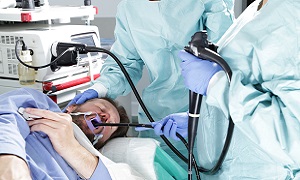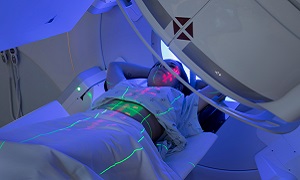Throat Cancer
Throat cancer is the presence of cancerous tumors that develop in the throat (pharynx), tonsils or the voice box (larynx). Beginning behind the nose, throat is a muscular tube that ends in your neck. This type of cancer usually begins in the flat cells lining the inside of the throat. The voice box is present below the throat and is at an equal risk of throat cancer. Cartilage makes up the voice box. Vocal cords that vibrate making sound whenever you talk are present in the voice box. Epiglottis acts as a lid for the windpipe. Throat cancer can also affect a part of the epiglottis.
Types of Throat Cancer
Cancer that develops in the voice box or throat is throat cancer. The voice box, present below the throat is very close to it. Most throat cancers occur involving the same type of cells.
- Nasopharyngeal cancer –It begins in the nasopharynx. The nasopharynx is that part of your throat present immediately behind the nose.
- Oropharyngeal cancer – It begins in the oropharynx. The oropharynx is the part of your throat present behind the mouth and including the tonsils.
- Laryngopharyngeal or hypopharyngeal cancer – It begins in the hypopharynx or laryngopharynx. This is the lower part of your throat above the windpipe and the esophagus.
- Glottic cancer – It begins in the vocal cords.
- Supraglottic cancer – This cancer begins in the upper part of the larynx including cancer that affects epiglottis. Epiglottis is a piece of cartilage that prevents the food from entering the windpipe.
- Subglottic cancer – It begins in the lower part of the voice box below the vocal cords.
Causes of Throat Cancer
When the cells in your throat develop DNA mutations, throat cancer develops. These DNA mutations cause uncontrollable growth of the cells that continue to live till the time normal cells would die. These cells form a tumor in the throat. Doctors are still trying to find out the cause behind these DNA mutations that cause throat cancer. However, doctors had a successful hand in figuring out the factors that pose an increased risk.
Symptoms of Throat Cancer
The various signs and symptoms of this type of cancer may be:
- Severe cough
- Difficulty in swallowing the food
- A never healing lump or sore present in the throat
- Unexpected weight loss
- Pain in the ears
- Changes in the voice like the hoarseness of the voice or unable to speak clearly
- A sore throat
Diagnosis of Throat Cancer
Your doctor may recommend various ways to diagnose the presence of throat cancer in your body.
Endoscopy
Your doctor may use an endoscope (a lighted scope) to have a close look at your throat while performing the procedure called endoscopy. There is a tiny camera present at the end of the endoscope. The camera transmits the images to a video screen. Your doctor will watch this screen to check for the signs of abnormalities in your throat.
Use of laryngoscope
There is another type of scope called laryngoscope that your doctor will insert in your voice box. The laryngoscope makes use of a magnifying lens to help the doctor for examining your vocal cords. The procedure is laryngoscopy.
Removal of the tissue sample
If your doctor finds some abnormalities during the procedure of laryngoscopy or endoscopy, he or she will pass surgical instruments through the scope for the collection of a tissue sample. This tissue sample is for the purpose of biopsy. Your doctor will send the sample to the laboratory for the testing. Your doctor might also ask for a sample of a swollen lymph node. He or she may use a technique called fine needle aspirate to aspirate the fluid from your swollen lymph nodes for the testing of the sample.
Imaging tests
Imaging tests include the X-rays, computed tomography (CT) scan, magnetic resonance imaging (MRI) and positron emission tomography (PET). These imaging tests may help your doctor in determining the extent of cancer in your body and whether it is beyond the surface of the voice box or your throat. Your doctor can confirm the diagnosis with the help of these imaging tests after carrying out a biopsy of the tissue.
Treatment options for Throat Cancer
Your treatment options may depend on various factors like the location, the staging of throat cancer in your body, your overall health, the types of cells involved in cancer and your personal preferences for the treatment. You must discuss in detail about the benefits as well as the possible health risks of each of the treatment options given by your doctor. This way you can easily determine the most appropriate treatment for yourself with the help of your doctor.
Radiation Treatment
Radiation treatment requires the usage of high energy beams from sources like X-rays and the protons to deliver radiation to the cancerous cells in your throat that result in the death of these cells. It can either come out from a large machine outside your body called external beam radiation or cone out from the small radioactive seeds and wires that the doctor will place inside your body near to the location of cancer. The procedure is brachy treatment.
For early throat cancers, radiation treatment is the only possible and necessary treatment. For more advanced throat cancers, radiation treatment combined with surgery or chemo gives desirable results. In most advanced throat cancers, this treatment reduces the signs & symptoms to make you feel more comfortable.
Surgery
Early-stage throat cancer surgery
When throat cancer remains confined to the surface of your throat or the vocal cords, the doctor might treat it surgically with the help of endoscopy. Your doctor will insert a hollow endoscope in your voice box or throat followed by the passing of special surgical tools or laser through this scope. Your doctor can cut off, scrape off or even vaporize superficial cancers (in case of laser) with the help of these tools.
Laryngectomy
Your doctor may remove a part of your voice box affected with cancer for smaller tumors. He or she will try to leave as much voice box as possible. The motive behind this is to preserve your ability to breathe and speak in a normal manner. For extensive & large tumors, there might be a need to remove the entire voice box.
Pharyngectomy
Your doctor may remove only smaller parts of your throat during the surgery of the smaller throat cancers. However, reconstruction of the removed parts is possible to allow you to swallow the food normally.
Neck dissection
Your doctor will recommend you to undergo surgery for the removal of some or all of the lymph nodes. This is because the cancer is present deep within your neck.
Chemo

It involves the usage of drugs to kill cancer cells. Doctors usually use chemo with radiation treatment to treat throat cancers.






